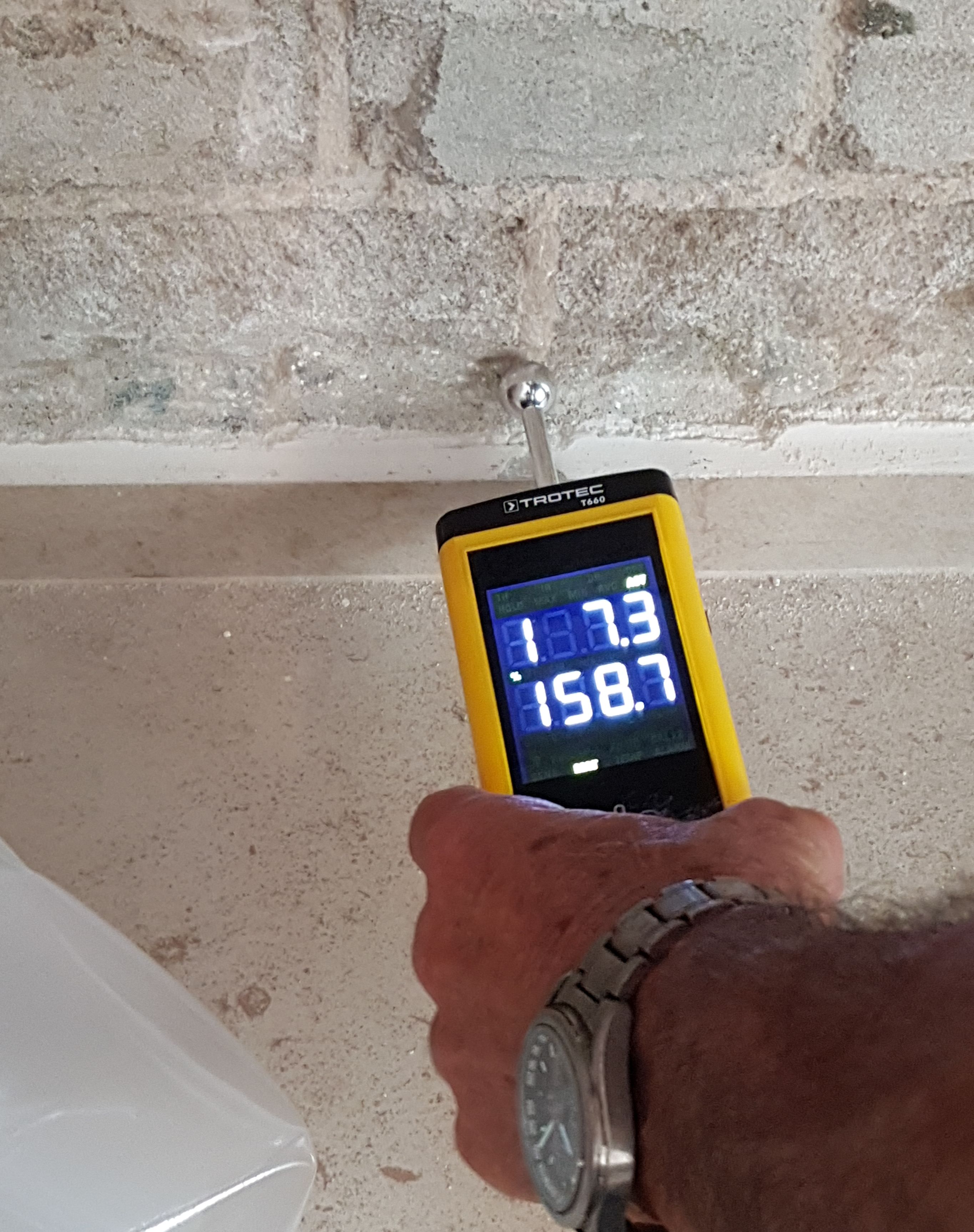Top 10 Advantages of Using a Moisture Meter for Exact Measurements in your house
Top 10 Advantages of Using a Moisture Meter for Exact Measurements in your house
Blog Article
Recognizing the Significance of a Moisture Meter in Protecting Against Mold and Water Damage in Your Home
In the world of home upkeep, the presence of wetness can usually be a silent yet powerful opponent, capable of causing prevalent mold and mildew development and insidious water damage if left untreated. Recognizing the significance of a wetness meter in this fight is not just an alternative but a tactical requirement.
Relevance of Moisture Discovery
Efficient moisture detection techniques are vital for safeguarding properties and avoiding prospective mold growth and water damages. Moisture can seep right into numerous structure products, bring about architectural concerns and carcinogen. By utilizing a moisture meter, homeowner can proactively recognize locations susceptible to excess wetness, enabling timely intervention and mitigation strategies.
Moisture meters provide exact analyses of wetness levels in different materials such as timber, drywall, and concrete. This data helps in determining locations of issue, even in hidden or hard-to-reach areas. Early discovery of moisture buildup makes it possible for timely repair work or adjustments to prevent more damage.

Exactly How Moisture Meters Work
Wetness meters play a critical role in the aggressive identification of excess moisture, helping in the prevention of possible mold development and water damage by providing exact readings of dampness levels in numerous building products. These gadgets function based on various principles, depending on their kind. Moisture Meter. Pin-type moisture meters, for example, have two pins that pass through the material to gauge the electrical resistance in between them. When wetness is existing, it improves the product's conductivity, resulting in a reduced resistance reading. Pinless dampness meters, on the other hand, use electromagnetic sensing units to check the material without creating damage. These sensing units emit electro-magnetic signals that pass through the material and gauge the dielectric residential properties, indicating wetness web content. Some advanced wetness meters pin both integrate and pinless modern technologies for comprehensive wetness discovery. Understanding exactly how moisture meters feature is vital for timely and precise dampness degree assessments, allowing effective precautionary procedures against mold and water damage.
Finding Early Warning Signs
Upon preliminary assessment of a home, recognizing subtle indications of excess moisture becomes critical in the early detection of prospective mold and mildew growth and water damage. Water spots can signify leakages or seepage, while peeling paint or wallpaper may be an outcome of dampness compromising the adhesion of these materials to the surface area. In addition, a rise in allergy symptoms or respiratory system concerns among passengers may suggest the visibility of mold and mildew due to excess dampness.
Stopping Mold Growth
Acknowledging early caution indications of excess wetness within a building not just allows timely detection of potential mold development and water Get the facts damages however also acts as a proactive action in preventing the expansion of mold. To effectively prevent mold and mildew development, it is vital to attend to any type of sources of dampness immediately. This can include fixing leakages in roofs, pipelines, or windows, guaranteeing correct air flow in damp locations like kitchen areas and washrooms, and utilizing dehumidifiers in high-humidity spaces. On a regular basis checking and maintaining the building's pipes, roof covering, and rain gutters can additionally help in protecting against water breach that might bring about mold development.
Along with attending to moisture resources, maintaining interior moisture degrees listed below 60% can significantly inhibit mold growth. Appropriate ventilation, appropriate insulation, and making use of a/c unit or followers can assist additional hints control interior humidity levels. Checking dampness degrees in locations susceptible to moisture, such as basements and crawl spaces, using a dampness meter can additionally help in early detection of raised dampness degrees and possible mold and mildew development. By taking positive steps to stop excess wetness and mold growth, homeowners can safeguard their home and indoor air quality.
Advantages of Routine Monitoring
Normal monitoring of dampness levels in a residential property can play an important role in keeping a healthy interior environment and preventing prospective mold and water damage. By routinely examining moisture degrees, homeowners can identify any type of concerns quickly and take essential actions to protect against mold development and water damage. One of the vital benefits of routine surveillance is early detection. By identifying and resolving high moisture degrees early on, property owners can interfere before mold has the opportunity to develop and spread. This proactive technique can conserve both time and cash over time by stopping considerable mold remediation and repair service prices.
In addition, normal surveillance permits home owners to track patterns and fads in dampness degrees in time. By establishing a baseline and monitoring changes, individuals can recognize any kind of locations of worry or prospective vulnerabilities in the building's framework. This data-driven method allows targeted interventions and upkeep initiatives to deal with underlying problems before they rise right into even more considerable issues. Ultimately, the consistent surveillance of wetness levels encourages home owners to shield their home, secure their health and wellness, and preserve the honesty of their indoor visit setting.

Conclusion

By making use of a dampness meter, home owners can proactively determine areas susceptible to excess wetness, permitting for prompt treatment and reduction approaches.

Keeping track of wetness levels in areas prone to wetness, such as cellars and creep areas, utilizing a wetness meter can additionally help in early detection of elevated dampness degrees and prospective mold development. (Moisture Meter)
Report this page